The AMD Ryzen 7 5700G, Ryzen 5 5600G, and Ryzen 3 5300G Review
by Dr. Ian Cutress on August 4, 2021 1:45 PM ESTCPU Tests: Legacy and Web
In order to gather data to compare with older benchmarks, we are still keeping a number of tests under our ‘legacy’ section. This includes all the former major versions of CineBench (R15, R11.5, R10) as well as x264 HD 3.0 and the first very naïve version of 3DPM v2.1. We won’t be transferring the data over from the old testing into Bench, otherwise it would be populated with 200 CPUs with only one data point, so it will fill up as we test more CPUs like the others.
The other section here is our web tests.
Web Tests: Kraken, Octane, and Speedometer
Benchmarking using web tools is always a bit difficult. Browsers change almost daily, and the way the web is used changes even quicker. While there is some scope for advanced computational based benchmarks, most users care about responsiveness, which requires a strong back-end to work quickly to provide on the front-end. The benchmarks we chose for our web tests are essentially industry standards – at least once upon a time.
It should be noted that for each test, the browser is closed and re-opened a new with a fresh cache. We use a fixed Chromium version for our tests with the update capabilities removed to ensure consistency.
Mozilla Kraken 1.1
Kraken is a 2010 benchmark from Mozilla and does a series of JavaScript tests. These tests are a little more involved than previous tests, looking at artificial intelligence, audio manipulation, image manipulation, json parsing, and cryptographic functions. The benchmark starts with an initial download of data for the audio and imaging, and then runs through 10 times giving a timed result.
We loop through the 10-run test four times (so that’s a total of 40 runs), and average the four end-results. The result is given as time to complete the test, and we’re reaching a slow asymptotic limit with regards the highest IPC processors.

Sizeable single thread improvements.
Google Octane 2.0
Our second test is also JavaScript based, but uses a lot more variation of newer JS techniques, such as object-oriented programming, kernel simulation, object creation/destruction, garbage collection, array manipulations, compiler latency and code execution.
Octane was developed after the discontinuation of other tests, with the goal of being more web-like than previous tests. It has been a popular benchmark, making it an obvious target for optimizations in the JavaScript engines. Ultimately it was retired in early 2017 due to this, although it is still widely used as a tool to determine general CPU performance in a number of web tasks.
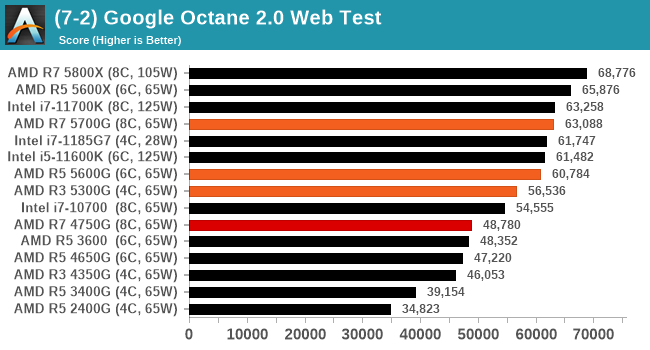
Speedometer 2: JavaScript Frameworks
Our newest web test is Speedometer 2, which is a test over a series of JavaScript frameworks to do three simple things: built a list, enable each item in the list, and remove the list. All the frameworks implement the same visual cues, but obviously apply them from different coding angles.
Our test goes through the list of frameworks, and produces a final score indicative of ‘rpm’, one of the benchmarks internal metrics.
We repeat over the benchmark for a dozen loops, taking the average of the last five.
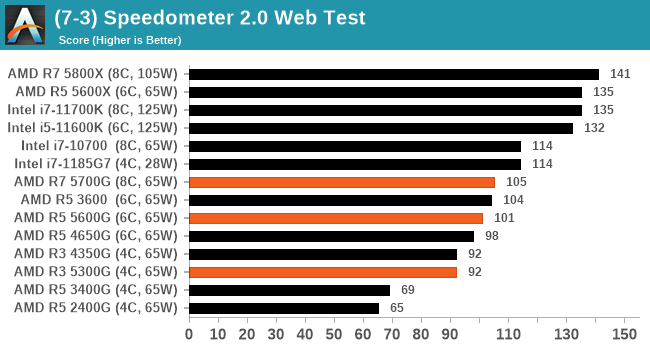
Legacy Tests
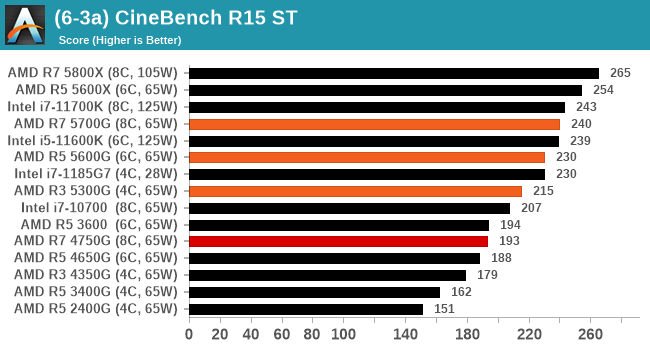
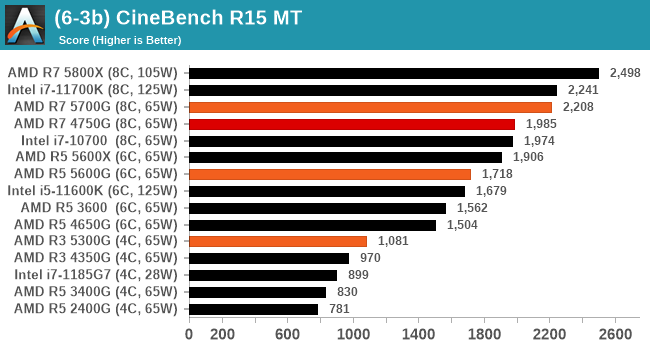
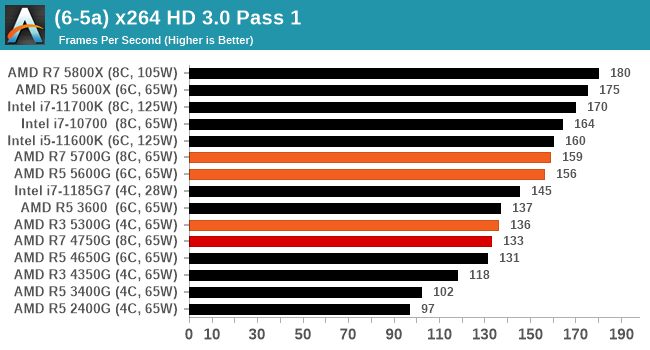
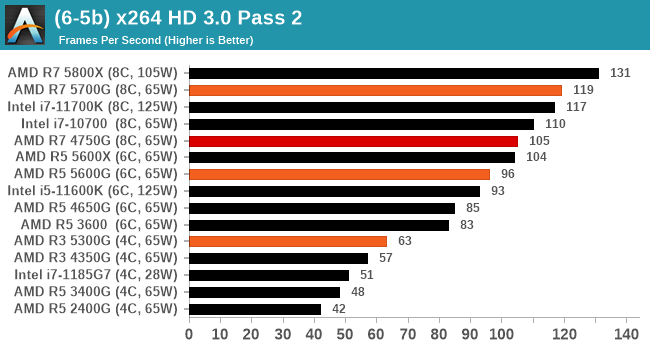

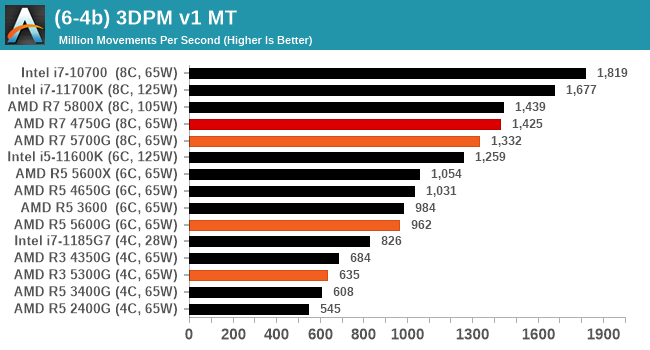


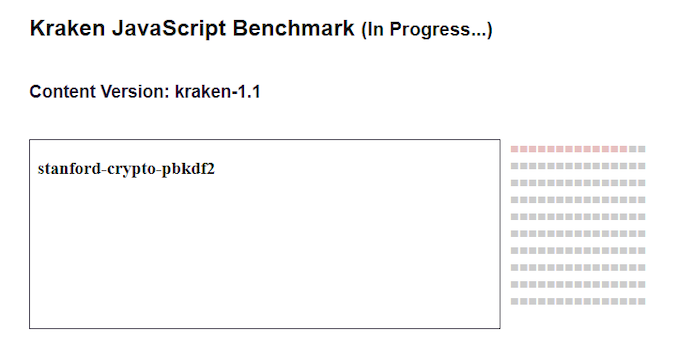
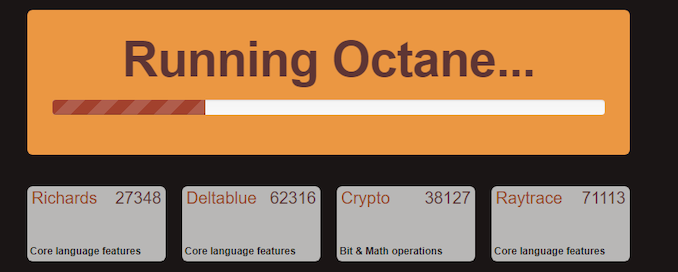
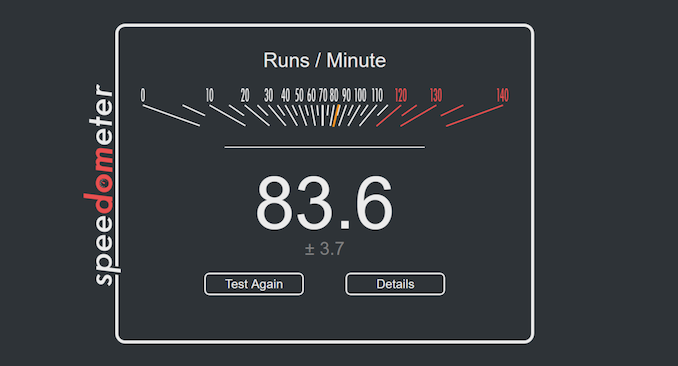








135 Comments
View All Comments
Cooe - Friday, August 6, 2021 - link
The recent GPU driver additions were NOT for Rembrandt. My guess is that's from some as of yet unannounced custom/embedded part for a market/use case where die size is absolutely CRITICAL (the only reason to pick RDNA over RDNA 2 is raw transistor density), that we're seeing there. Rembrandt otoh has had explicitly "RDNA 2" based graphics IP literally since it very first appeared on leaked AMD roadmaps YEARS ago, and it's consistently stayed "RDNA 2" in every future appearance/leaked roadmap.In fact with AMD's penchant for copy-pastaing reusable IP blocks across as many different products as they can, the iGPU implementation on Rembrandt is likely to be EXTREMELY similar to what is currently seen on Van Gogh (in fact, it wouldn't surprise me at ALL if they end up just sharing the exact same 8CU RDNA 2 iGPU block wholesale).
nandnandnand - Saturday, August 7, 2021 - link
https://www.notebookcheck.net/AMD-Ryzen-6000-Rembr..."Van Gogh is said to have eight compute units (CUs) per shader array with a 1 MB L2 cache while Rembrandt will have six CUs per shader array with 2 MB L2 cache, with the added cache possibly translating into improved gaming performance. It must be noted here that we still do not know the total number of CUs on the GPU, but rumors indicate up to 12 CUs for Rembrandt."
AThomas - Wednesday, August 4, 2021 - link
These APU's have my exact use case. Upgrading my HTPC which has trouble with HEVC codec (YouTube 4K) that can easily play PS2, PS1, Dreamcast, Sega 32X/CD, etc, etc. Plus Space Engineers which none of my rigs can play at the moment. All done with the iGPU at 60+FPS or better , also some Xbox titles like Forza Horizon since I don't play on buying a Xbox X.Second use is server. WIth a couple of VM's but mostly containers. Maybe throw a GPU in their for renting out GPU. All those threads will allow lots of functional task to be done.
Jorgp2 - Thursday, August 5, 2021 - link
AMDs APUs don't support GPU virtualizationGreenReaper - Sunday, August 15, 2021 - link
Not yet, no.boozed - Wednesday, August 4, 2021 - link
Are you sure?eastcoast_pete - Thursday, August 5, 2021 - link
Hush now! Ian was spilling Intel's newest acquisition plans..ballsystemlord - Wednesday, August 4, 2021 - link
In addition to what Dan said above your table entitled, "Ryzen 5 APUs (65W)" Is completely wrong. The 5600G is a 6 core processor and I suspect some of the other entries are incorrect also.Rudde - Wednesday, August 4, 2021 - link
"The second part is a Ryzen 5 5600G, featuring six cores and sixteen threads, with a base frequency of 3.9 GHz and a turbo frequency of 4.6 GHz. "This sentence has suffered from some copy and pasting. 12 threads and 4.4 GHz boost.
nandnandnand - Wednesday, August 4, 2021 - link
"However slow quad cores (like the 2400G still let you down."Missing closing parenthesis mark.